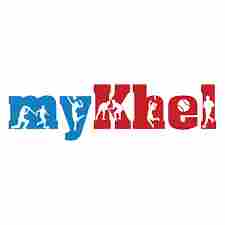Kotak Mahindra Bank’s sustained digital banking push has propelled its Kotak811 mobile app to the top of India’s banking charts and the third spot worldwide in the first half of 2025, according to data from app analytics platform Sensor Tower.
Kotak811 logged over 16 million downloads, marking a 250% year-on-year surge — the fastest growth for any banking app globally during the period. The top two spots were taken by neobanks without traditional operations — Brazil’s NuBank and the UK’s Revolut. The State Bank of India’s Yono app ranked fourth, with 14 million downloads in H1 2025.
Remarkably, Kotak’s growth came despite the RBI’s restrictions that barred the bank from onboarding new digital customers until February 12, which also hit its credit
card division. “Running digital operations in a fundamentally different way than traditional banking has worked for 811. It’s a full-service banking account,” said Jay Kotak, co-head of Kotak811.
The platform now serves 2.6 crore fully KYC-compliant savings account holders, who enjoy access to all branch-level facilities. Kotak attributes its profitability to a low-cost airline-style model, offering zero-balance accounts with optional paid add-ons like debit cards and cheque books. Much like budget airlines, where passengers accept fewer frills for lower fares, digital-first customers who rarely use physical instruments can still enjoy complete banking services without maintaining high balances.
Yono’s Scale Advantage
The Kotak811 app functions as a digital financial marketplace, offering savings, UPI and IMPS payments, mutual funds, insurance, and credit cards within the Kotak ecosystem. However, SBI’s Yono continues to lead in overall install base and usage, backed by its 50 crore-strong customer base, nearly 10 times Kotak’s 5 crore customers. Yono also runs a lighter version, Yono Lite, catering to customers with basic smartphones, while Kotak maintains a separate app for its traditional customers.
Expanding to Affluent Segments
Launched in 2017, Kotak811 is among India’s earliest digital banking brands. It has since broadened its reach to upper-middle-class and affluent customers. “We offer 811 Super for the mass-affluent segment, which already serves over 10 lakh customers. Many very affluent 811 customers also move toward our marquee offerings like Solitaire and Kotak Private, showing the aspirational nature of the 811 ecosystem,” Jay Kotak said, stressing that replicating the model requires years of digitisation and heavy upfront investment.
Banks Versus Fintechs
Despite 811’s success, Indian consumers still rely heavily on payment apps like PhonePe, Google Pay, and Paytm for daily transactions. Unlike these fintechs, however, Kotak811 offers bank-manufactured products under a regulated framework. With Indian regulations barring neobanks from offering full-fledged banking services, only banks like Kotak can deliver end-to-end digital banking.
“Being on the banking platform brings credibility, regulatory stability, and scalability. More than just a payments app, 811 is a full-fledged financial marketplace,” Kotak said, highlighting the contrast with fintech models.
Global Digital Banking Surge
Sensor Tower noted that the ranking reflects a shift toward mobile-first banking in markets where many still lack access to traditional branches. Neobanking apps are helping expand financial inclusion in countries like Brazil, India, Mexico, and Colombia by offering low-cost, branchless services.
The report added that consumer banking apps surpassed 2 billion global downloads in the 12 months to June 2025, a 5.1% annual rise, with roughly 500 million downloads each quarter. “Mobile apps are now the go-to platform for financial services, and banking apps are leading the shift,” Sensor Tower said. “Their dominance reflects the strong user preference for mobile-first experiences, setting the pace for digital transformation across the industry.”













